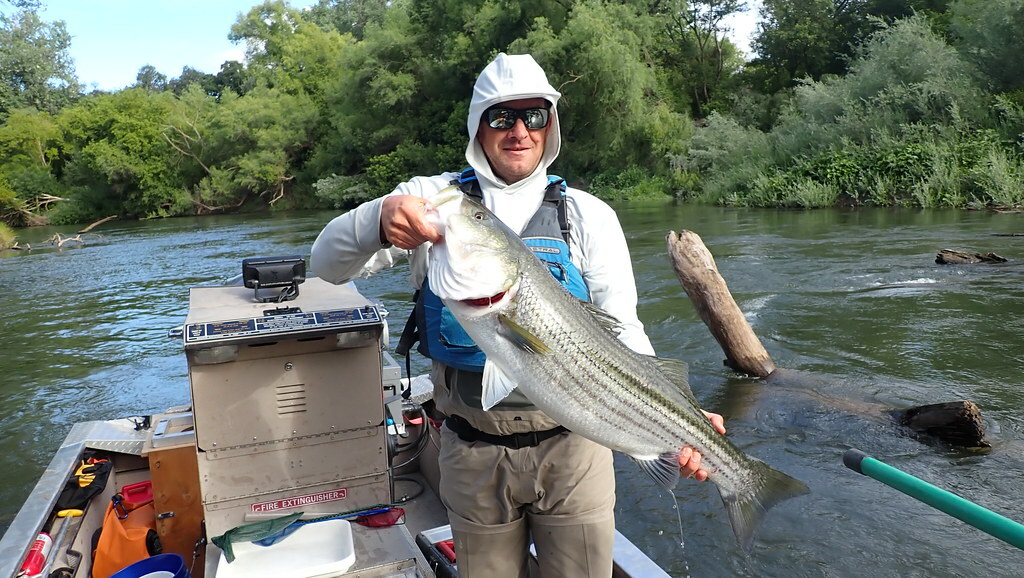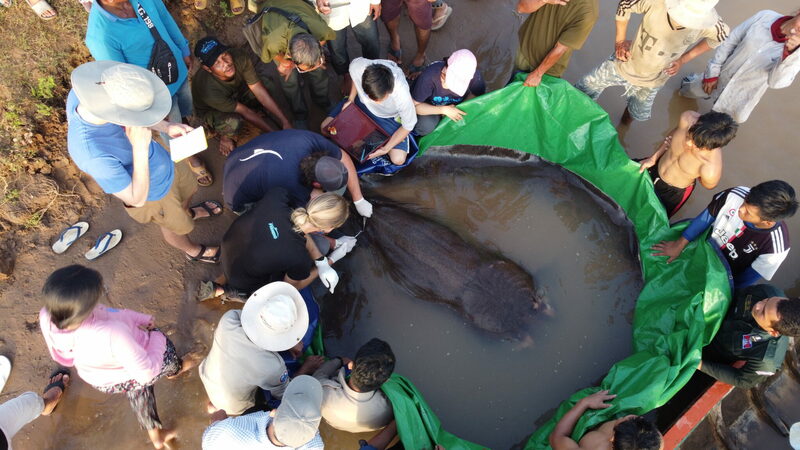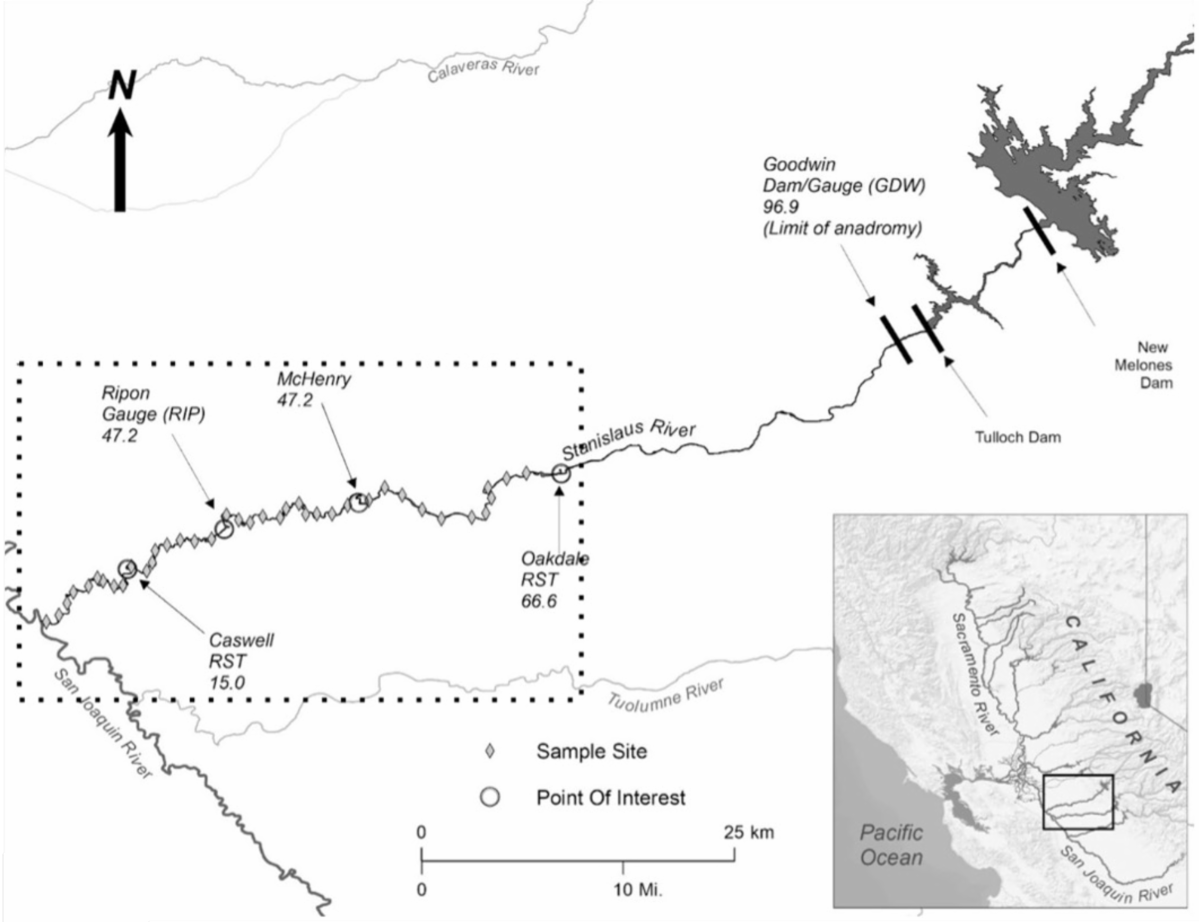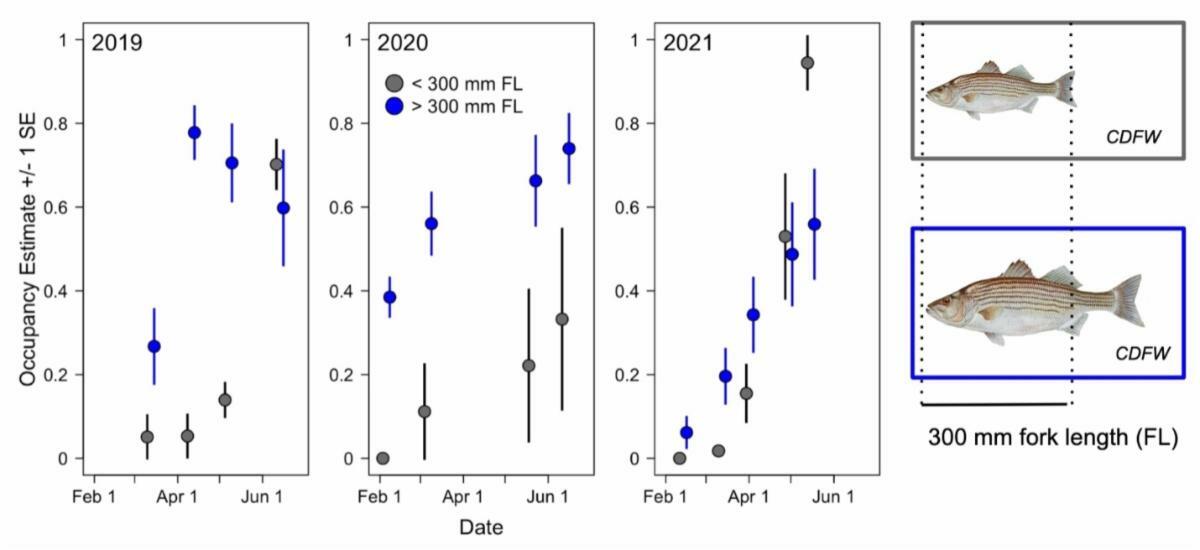Stanislaus River Fish Report for 6-27-2022
Stats & Stripes: Studying When Striped Bass Occupy the Stanislaus River
Stanislaus River - CA

by FISHBIO
6-27-2022
Fisheries biology and hospitality have an unexpected common interest: occupancy. Just like hotel managers track seasonal trends in occupied and vacant rooms, FISHBIO’s biologists recently conducted a statistical analysis to predict patterns in when striped bass (Morone saxatilis) occupied sample sites on the Stanislaus River. They treated the entire study area as a “hotel” broken down into 39 individual sites, or “rooms,” and looked at whether striped bass either did or did not use these sites over time. This study provides information on fine-scale patterns of striped bass distribution, which is less well understood than their large-scale migration patterns in California. Generally, adult striped bass are known to migrate into rivers throughout the Central Valley to spawn from April to June before returning to the San Francisco Estuary and the Pacific Ocean from summer to fall. However, there are individual exceptions to this trend in adult movement patterns, and juvenile striped bass movement patterns are even more variable. Additionally, most targeted monitoring and research efforts for striped bass have occurred in the Sacramento River Basin and the Sacramento-San Joaquin Delta and limited information is available about seasonal trends in striped bass movements into the San Joaquin River Basin.
FISHBIO is a dedicated group of research scientists, engineers, and technicians that specialize in counting, tracking, and analyzing trends in fish and wildlife populations throughout the world. An expert staff, technical capacity, and state-of-the-art equipment make FISHBIO a trailblazer in aquatic research. For more information, please visit FISHBIO.com
Photos
< Previous Report Next Report >
< Previous Report Next Report >
More Reports

6-20-2022
Deep within the murky waters of the Mekong River, giants lie concealed. Hard as it may seem, in this mysterious...... Read More

5-23-2022
Being able to consistently and comprehensively monitor aquatic biodiversity is critical to inform fisheries management and evaluate the effectiveness of...... Read More

Website Hosting and Design provided by TECK.net

